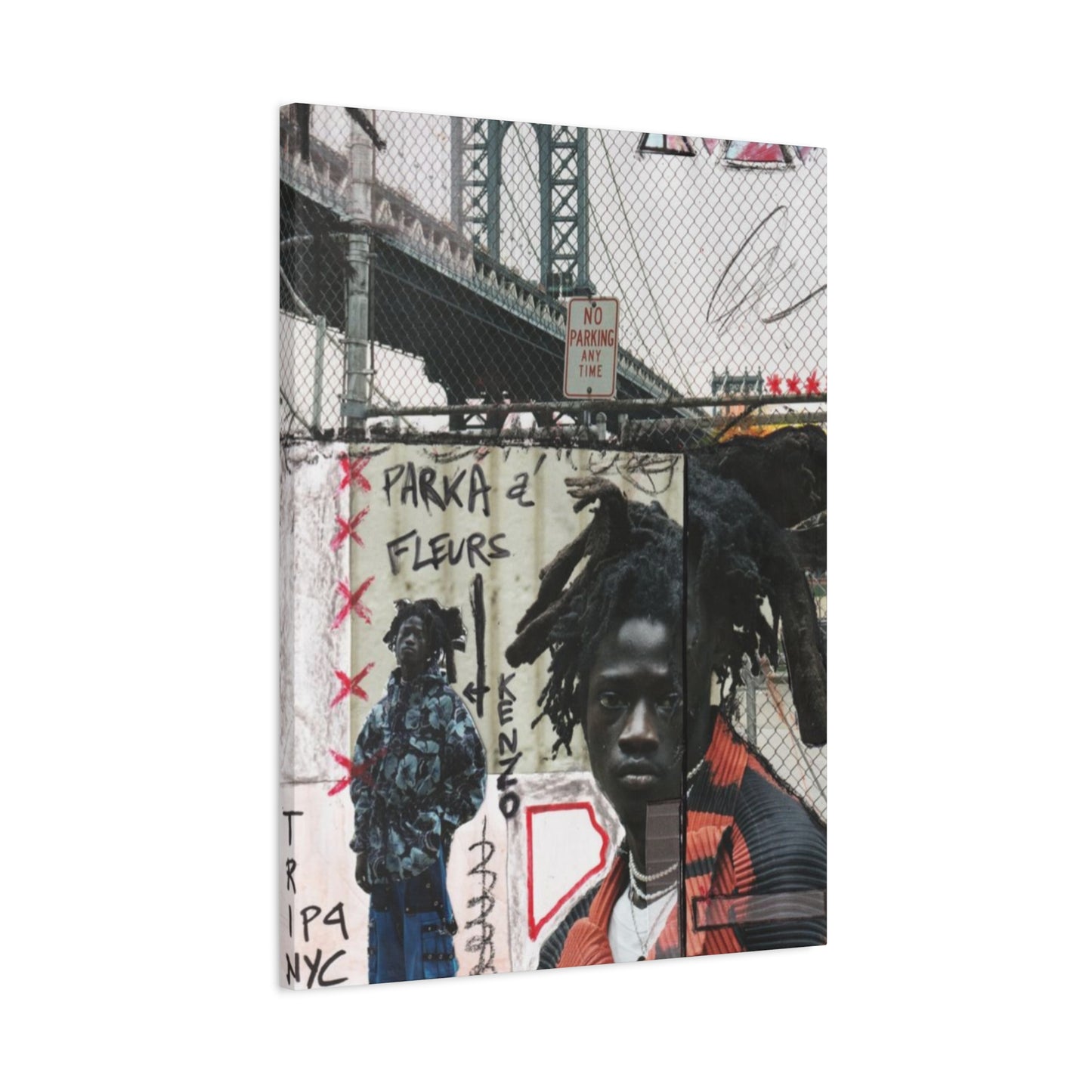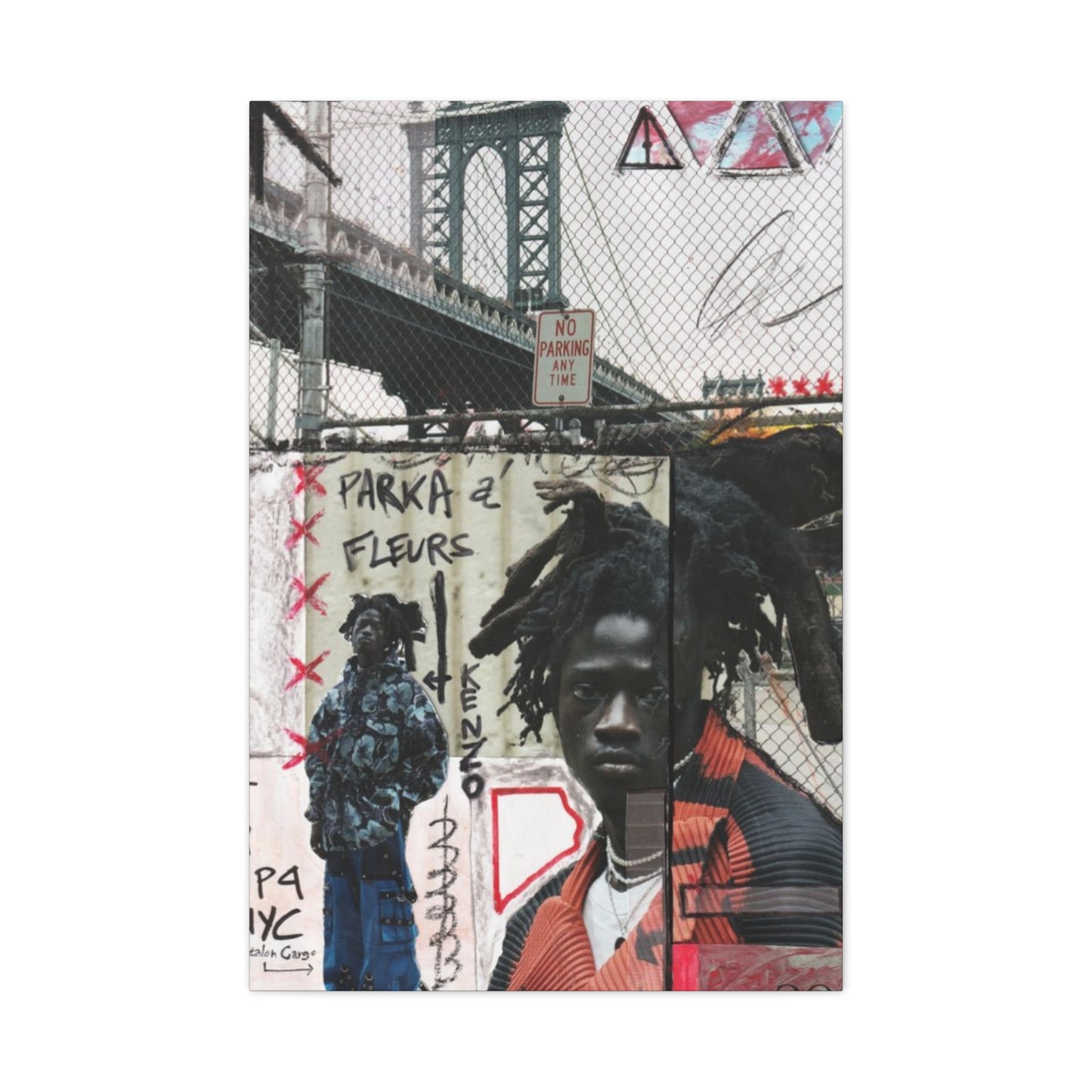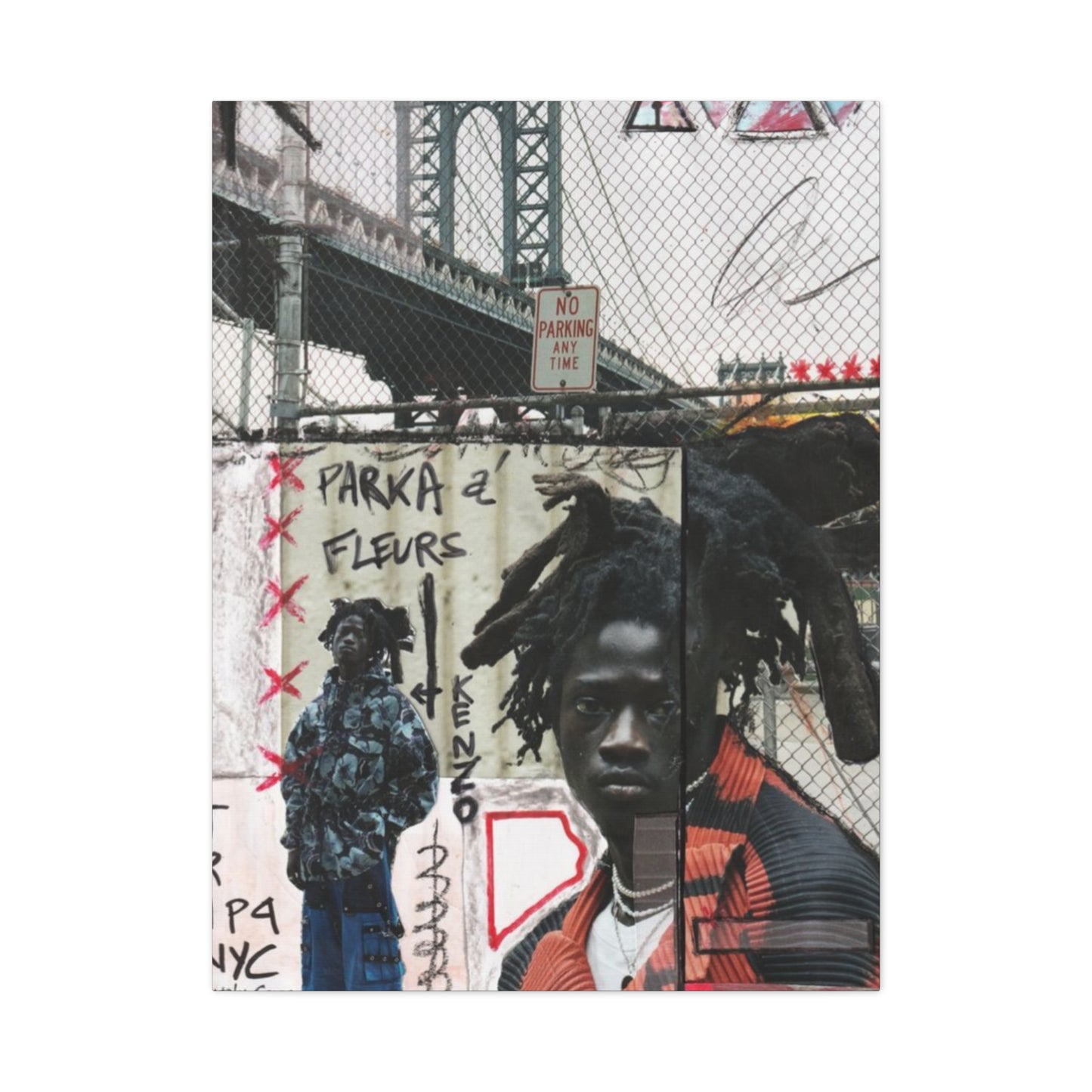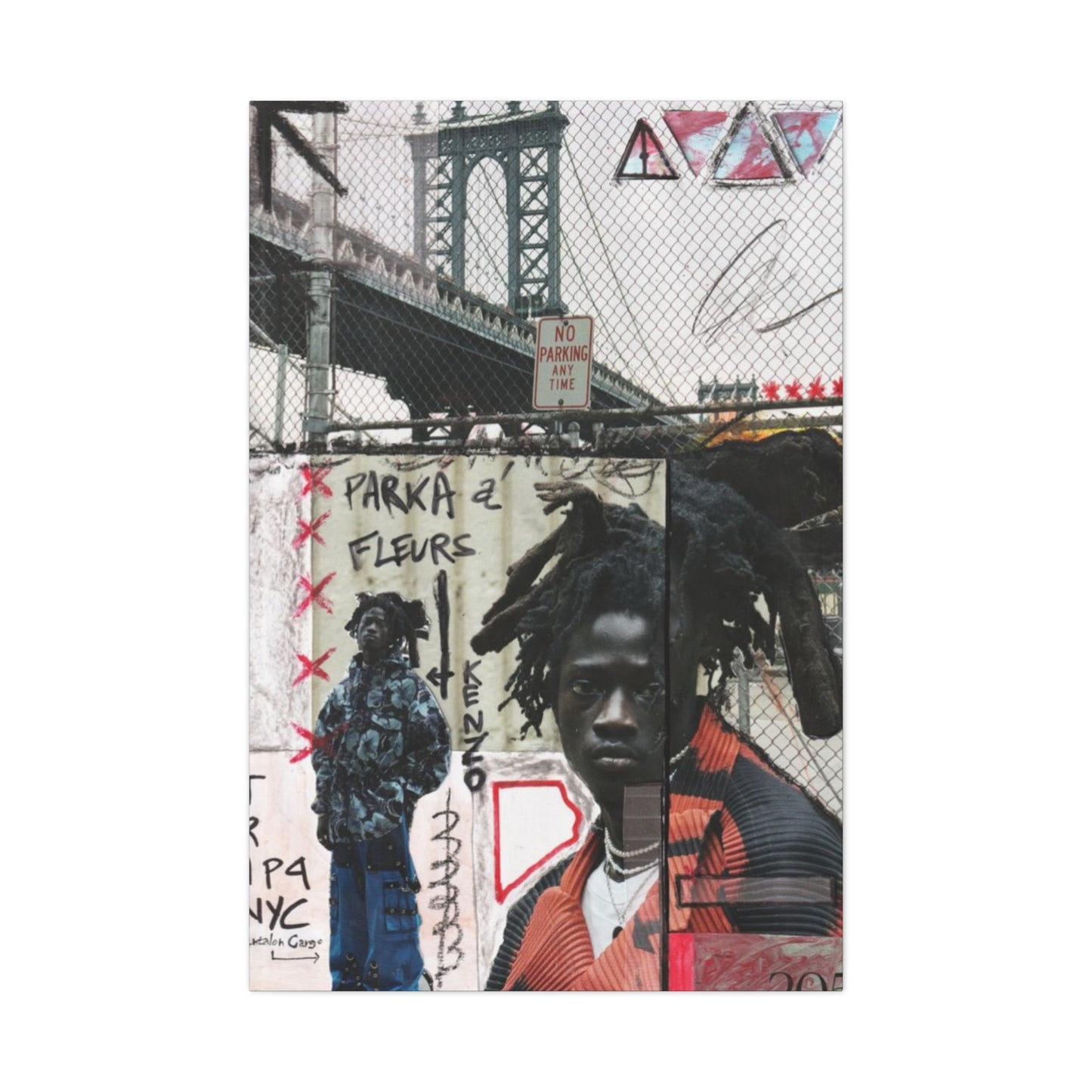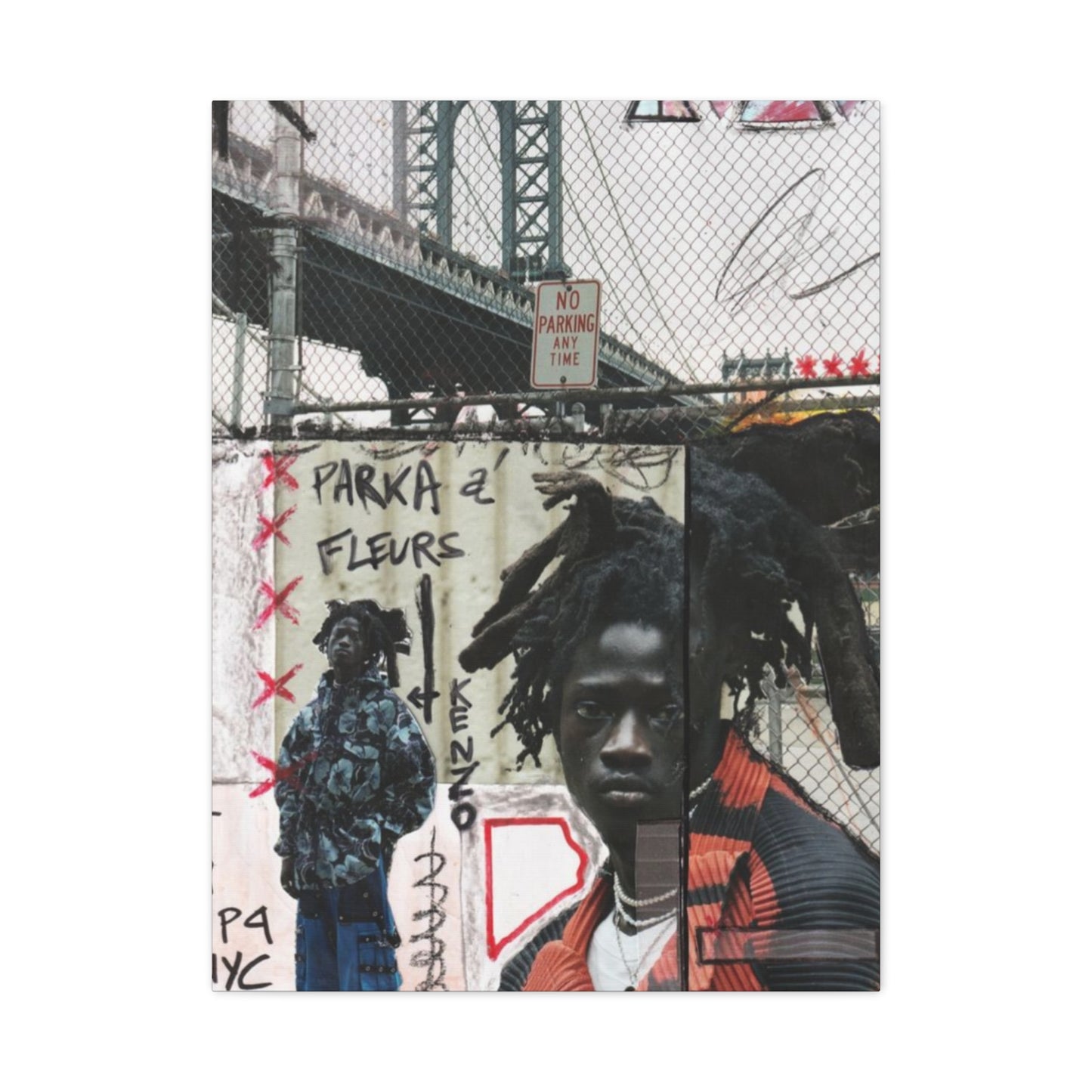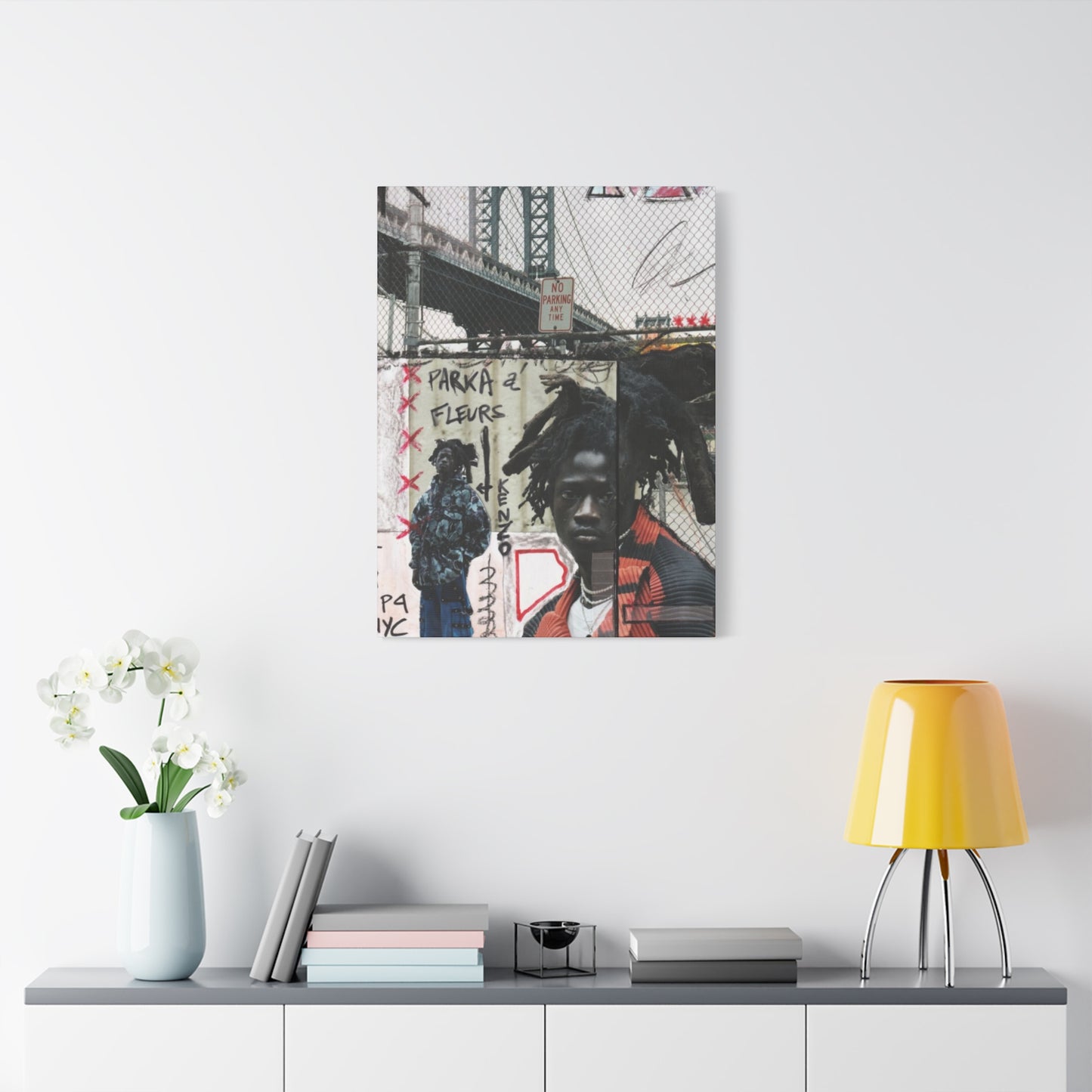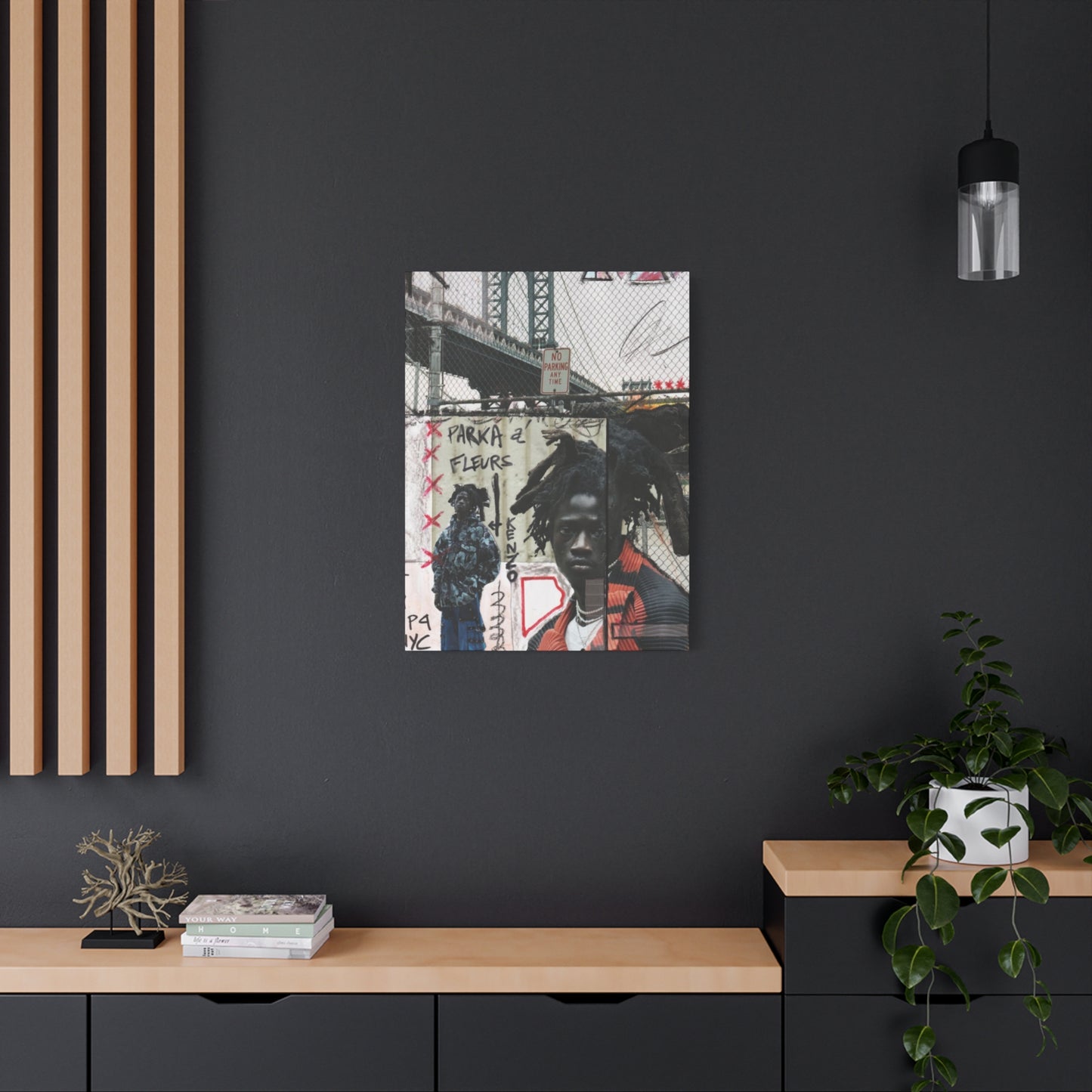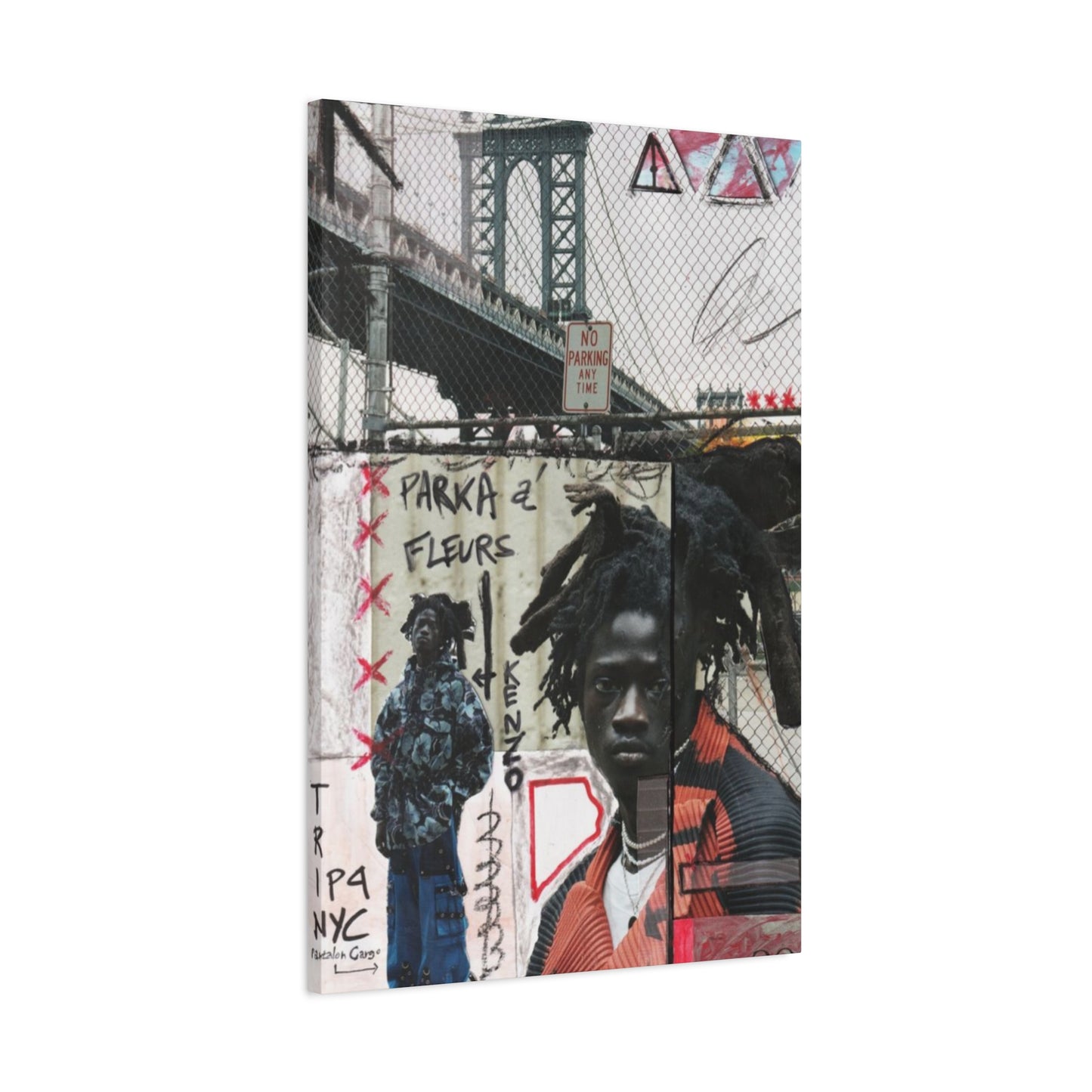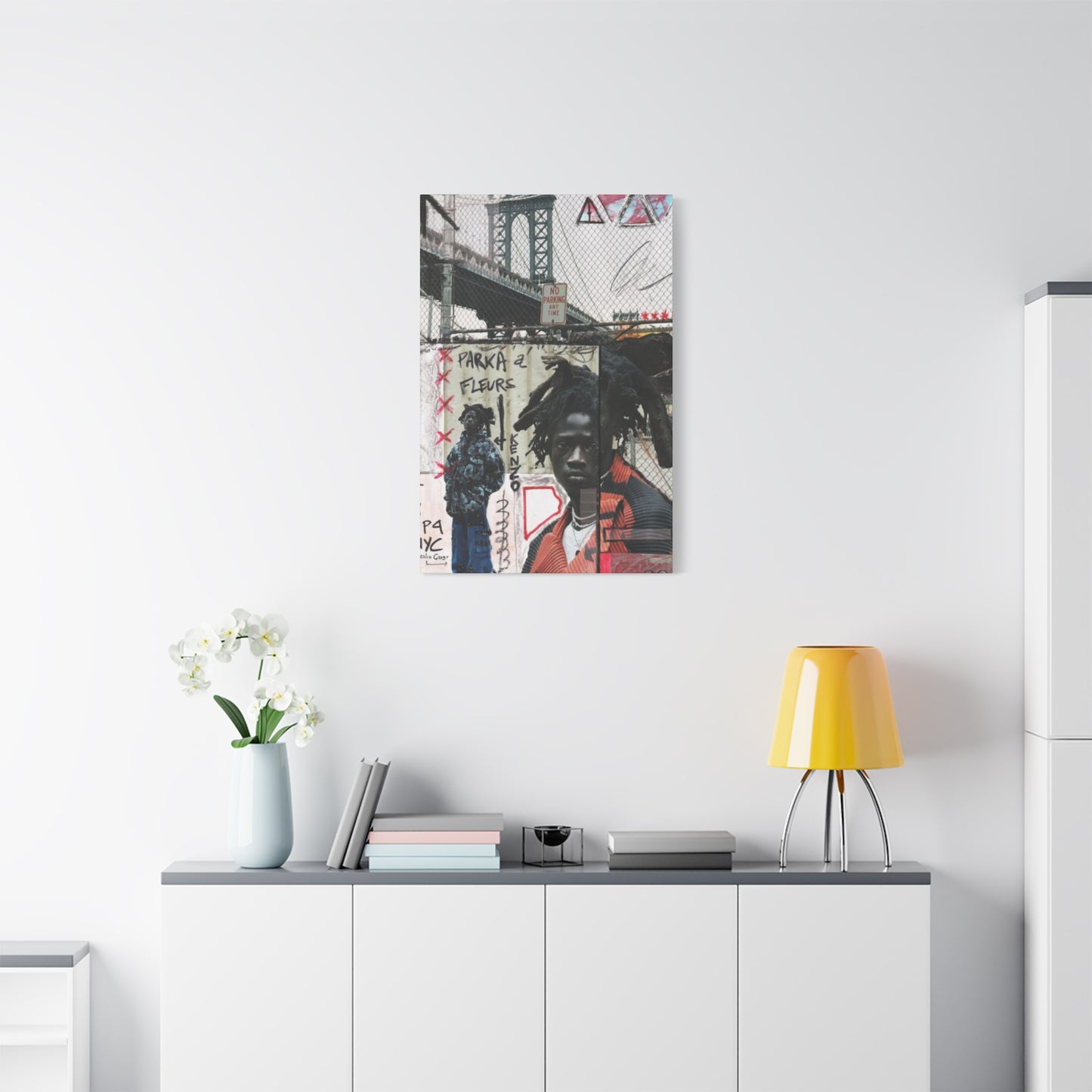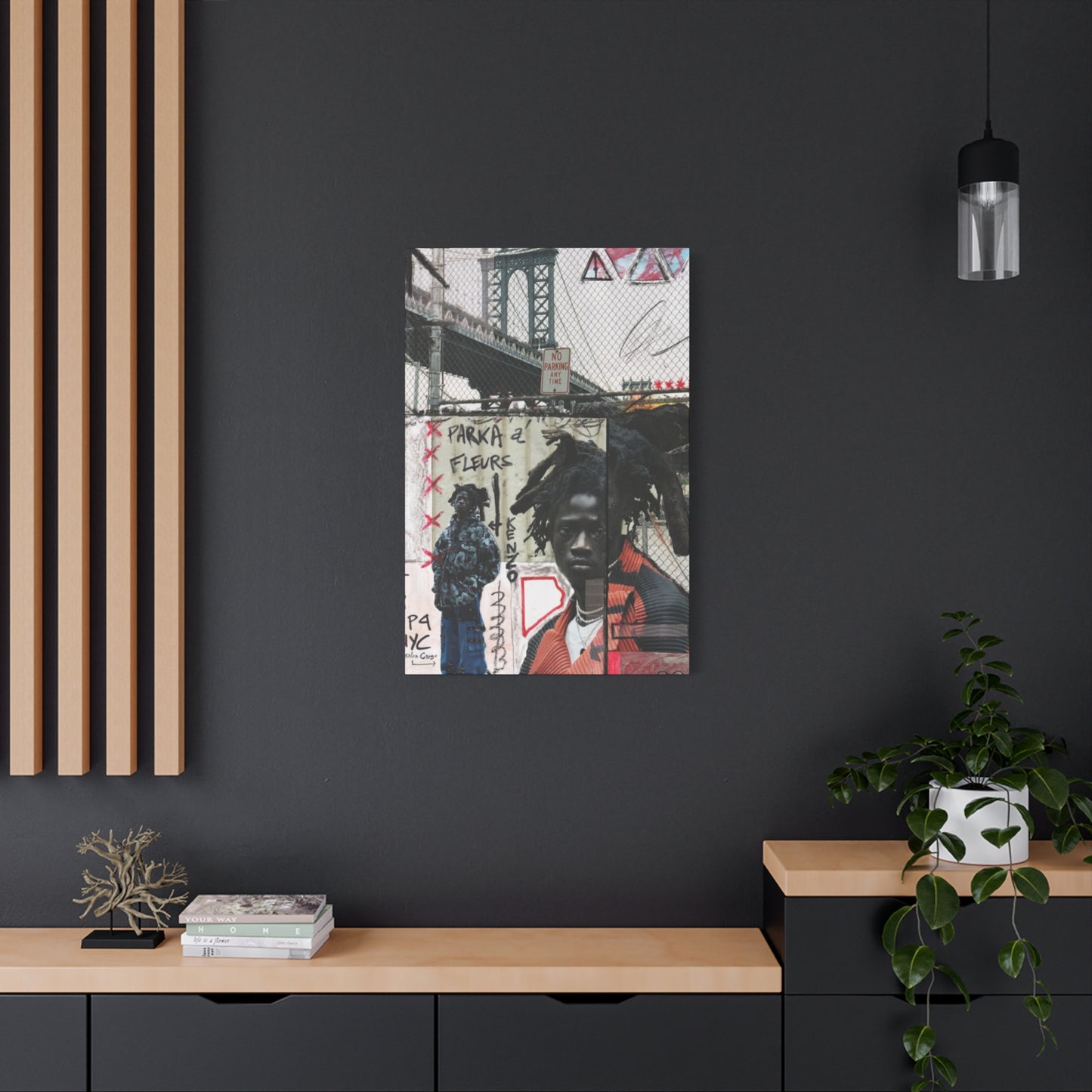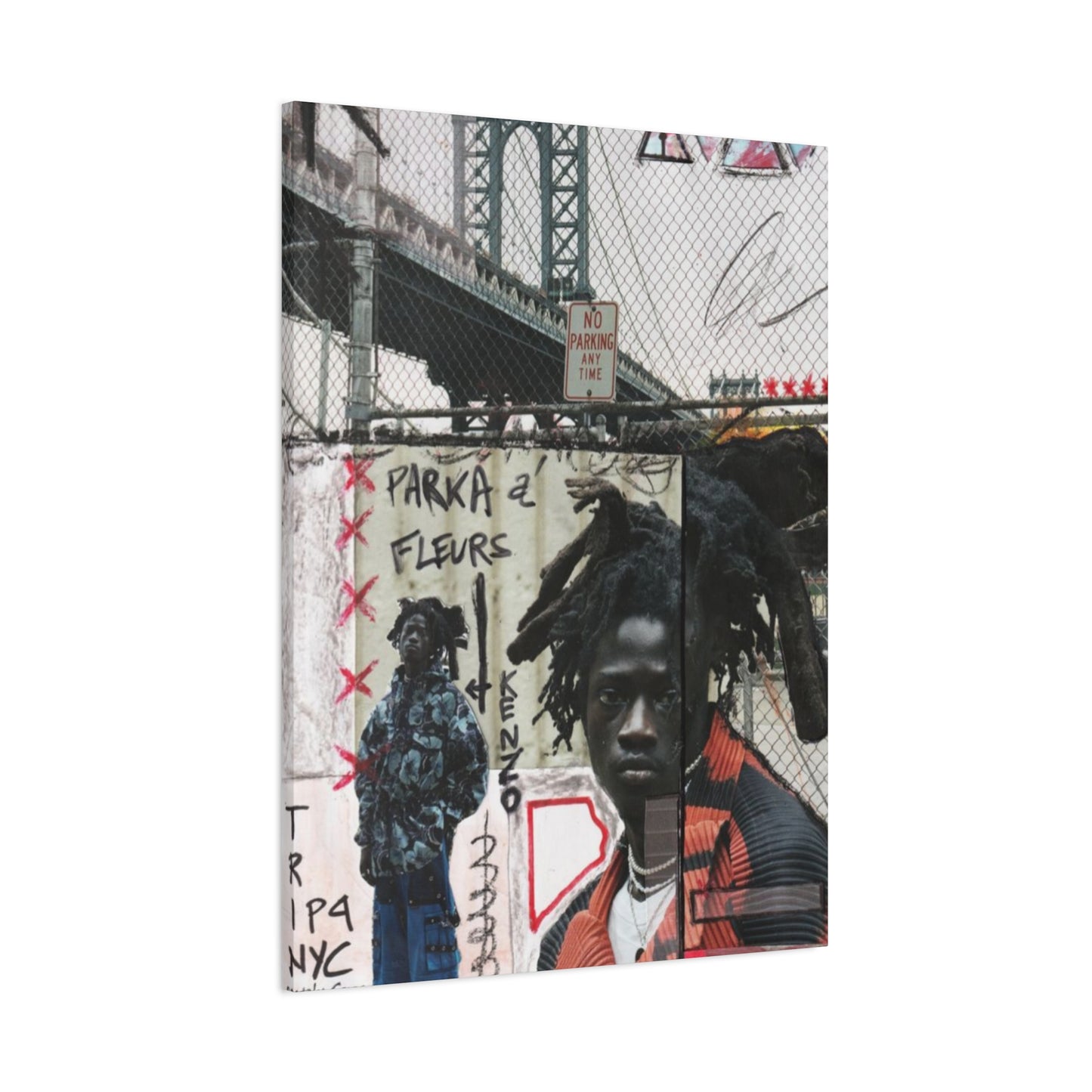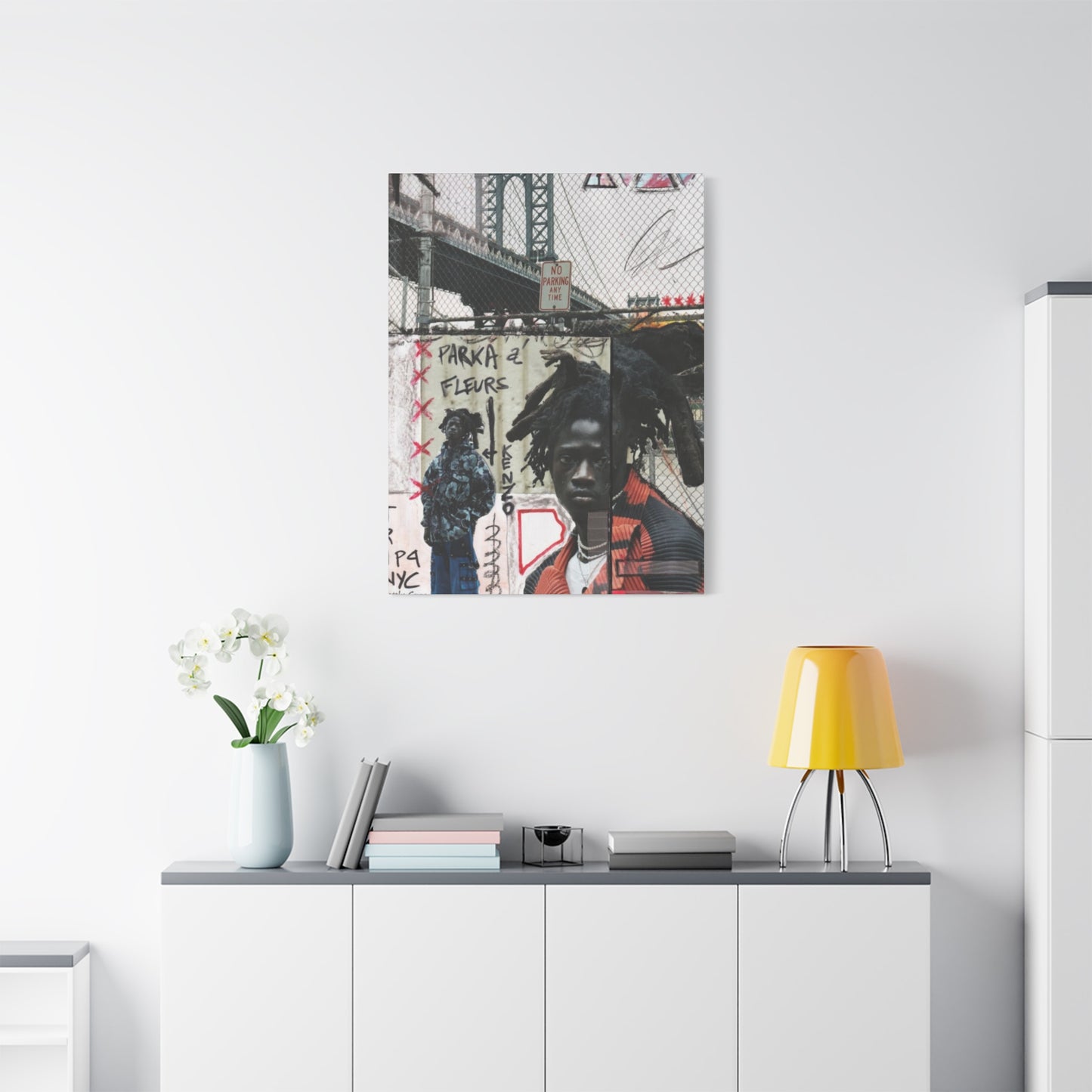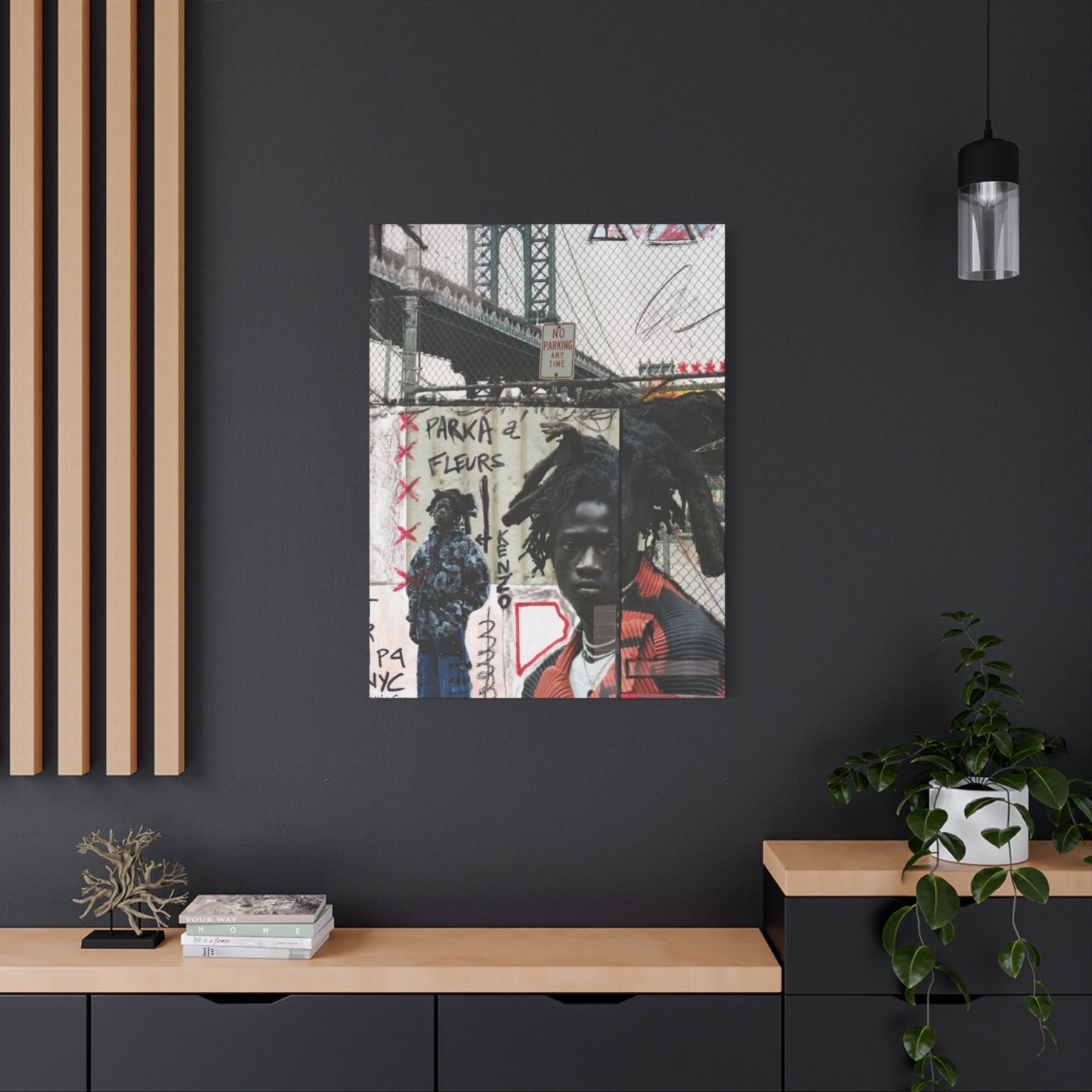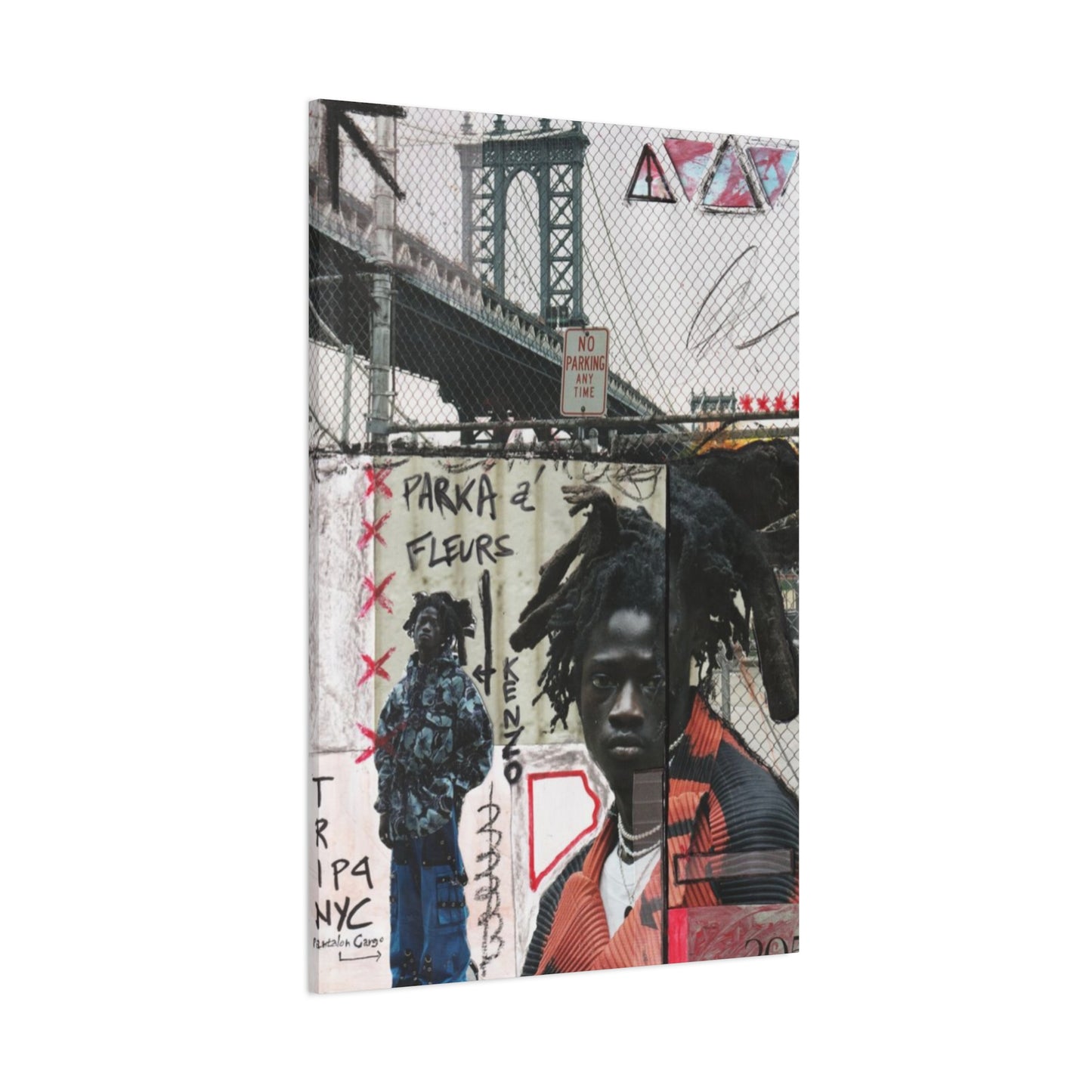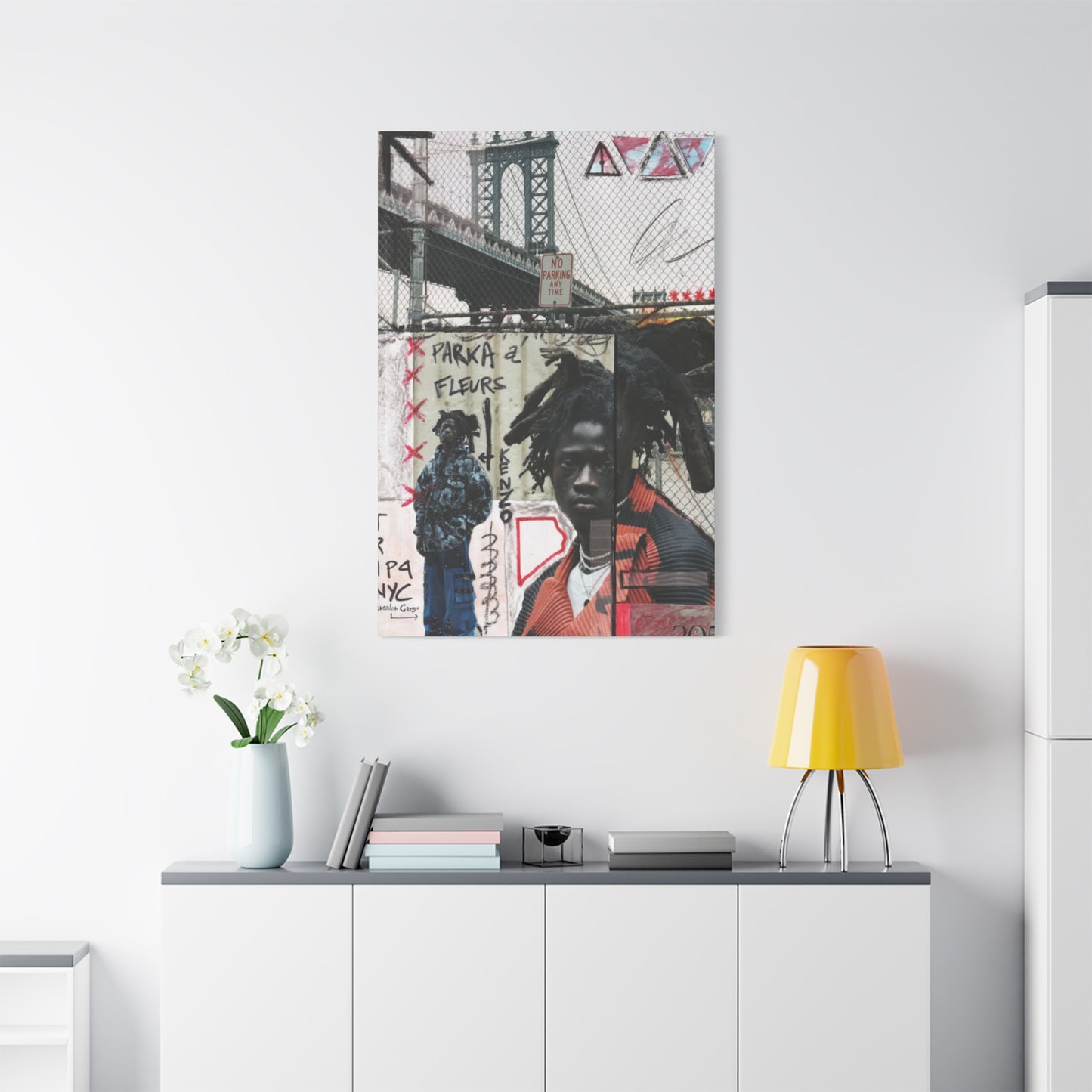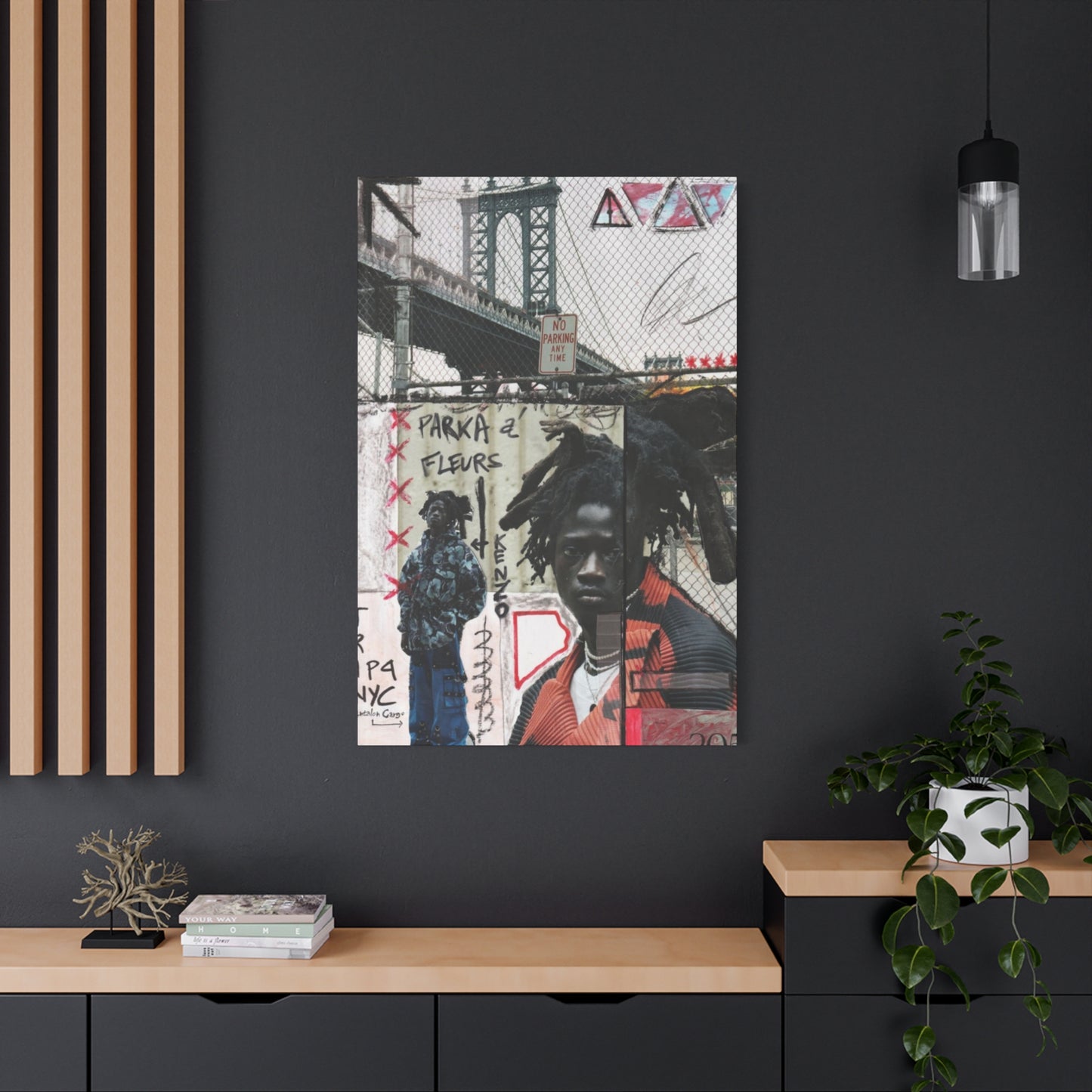Brooklyn Bridge Abstract Wall art: Mixed Media NYC Wall Decor Collection
New York City's most celebrated architectural marvel, the Brooklyn Bridge, has transcended its role as a mere transportation structure to become a powerful symbol of artistic inspiration. This iconic landmark, with its intricate network of cables and Gothic Revival towers, has captured the imagination of contemporary artists who reimagine its essence through abstract interpretations and mixed media techniques. The fusion of historical significance with modern artistic expression creates compelling wall art that brings the energy and spirit of NYC into contemporary living spaces.
Abstract representations of the Brooklyn Bridge offer a fresh perspective on this timeless structure, transforming familiar architectural elements into dynamic visual experiences. These artistic interpretations move beyond literal documentation to explore the emotional and symbolic resonance of this engineering masterpiece. Through the use of layered textures, bold geometric forms, and innovative material combinations, artists create pieces that honor the bridge's legacy while speaking to modern aesthetic sensibilities.
The appeal of Brooklyn Bridge abstract art lies in its ability to capture both the monumental scale and intimate details of this architectural icon. Artists working in mixed media find endless possibilities in translating the bridge's complex geometry into contemporary visual language. The interplay of structural elements, the rhythm of cables, and the interplay of light and shadow across the bridge's span provide rich source material for artistic interpretation.
Brooklyn Bridge Reimagined in Abstract Form
Contemporary artists approach the Brooklyn Bridge with fresh eyes, seeing beyond its functional purpose to discover new artistic possibilities. The bridge's distinctive silhouette, with its soaring towers and intricate cable system, provides a framework for abstract exploration that resonates with modern design principles. These artistic reimaginings capture the essence of the structure while allowing for creative interpretation that speaks to contemporary audiences.
The transformation of the Brooklyn Bridge into abstract art involves a careful balance between recognition and innovation. Artists must maintain enough visual connection to the original structure to ensure recognition while pushing the boundaries of representation to create something entirely new. This delicate balance results in artwork that feels both familiar and surprising, honoring the bridge's iconic status while offering fresh perspectives on its visual impact.
Mixed media techniques prove particularly effective in capturing the Brooklyn Bridge's complex character. The combination of different materials and textures mirrors the bridge's own material composition, from the stone towers to the steel cables to the wooden planking of the walkway. Artists can explore these textural contrasts through various artistic mediums, creating layered compositions that reflect the bridge's multifaceted nature.
The abstract interpretation of the Brooklyn Bridge often focuses on its most distinctive visual elements: the graceful arc of its cables, the Gothic Revival stonework of its towers, and the rhythmic patterns created by its suspension system. These elements become building blocks for artistic composition, allowing artists to create works that capture the bridge's structural poetry while exploring new visual territories.
Color plays a crucial role in abstract Brooklyn Bridge art, with artists choosing palettes that reflect everything from the bridge's historical context to its contemporary urban environment. Some artists opt for monochromatic schemes that emphasize form and texture, while others incorporate vibrant colors that reflect the energy and diversity of New York City. The choice of color palette can dramatically alter the mood and impact of the finished piece.
The process of abstracting the Brooklyn Bridge involves identifying the essential visual elements that make the structure recognizable and finding new ways to present these elements within contemporary artistic frameworks. This might involve fragmenting the bridge's form, exaggerating certain proportions, or combining realistic details with completely abstract elements. The goal is to create artwork that captures the spirit of the bridge rather than its literal appearance.
How Mixed Media Adds Depth to Iconic Landmarks
Mixed media techniques offer unprecedented opportunities for artists to explore the complexity and richness of iconic landmarks like the Brooklyn Bridge. By combining different materials, textures, and artistic mediums, artists can create layered compositions that reflect the multifaceted nature of these architectural marvels. The dimensional quality achieved through mixed media approaches adds visual and tactile interest that single-medium works cannot match.
The Brooklyn Bridge, with its combination of stone, steel, and cable construction, naturally lends itself to mixed media interpretation. Artists can incorporate actual materials that echo the bridge's construction, such as metal elements, textured papers, or industrial materials, creating direct connections between the artwork and its subject. This material dialogue adds authenticity and depth to the artistic interpretation.
Layering techniques in mixed media work allow artists to build complexity gradually, much like the bridge itself was constructed over many years. Each layer adds new information and visual interest, creating compositions that reward careful examination. The interplay between different materials and textures creates visual tension and harmony that mirrors the bridge's own structural dynamics.
The three-dimensional quality achievable through mixed media techniques helps capture the monumental scale and physical presence of the Brooklyn Bridge. By building up surfaces, incorporating relief elements, or adding dimensional components, artists can create works that convey the bridge's impressive physical reality while maintaining the freedom of abstract interpretation.
Texture plays a particularly important role in mixed media Brooklyn Bridge art. The contrast between smooth and rough surfaces, matte and glossy finishes, and hard and soft materials can represent the various elements of the bridge's construction and environment. These textural contrasts add visual interest and create opportunities for light to interact with the artwork in dynamic ways.
The combination of traditional and contemporary materials in mixed media work reflects the Brooklyn Bridge's own position as a historical structure in a modern city. Artists might combine classical drawing or painting techniques with digital prints, found objects, or industrial materials, creating compositions that speak to both the bridge's historical significance and its contemporary relevance.
Mixed media techniques also allow for the incorporation of photographic elements, whether historical images of the bridge's construction or contemporary photographs that capture its current context. These photographic components can be altered, fragmented, or combined with other materials to create complex narratives about the bridge's past, present, and future.
Bold Textures Meet NYC History in Wall Art
The rich textural possibilities inherent in Brooklyn Bridge-inspired wall art create compelling visual experiences that honor the structure's historical significance while engaging contemporary aesthetic sensibilities. Bold textures serve multiple purposes in these artistic interpretations, adding visual interest, creating tactile appeal, and reinforcing thematic connections to the bridge's construction materials and urban environment.
The incorporation of bold textures in Brooklyn Bridge art often draws inspiration from the bridge's own material palette. The rough stone of the towers, the smooth steel of the cables, and the weathered surfaces that come from over a century of exposure to the elements all provide textural references that artists can explore and interpret. These material connections create authentic relationships between the artwork and its architectural inspiration.
Contemporary wall art featuring the Brooklyn Bridge often employs aggressive textural techniques that reflect the energy and intensity of New York City itself. Heavy impasto applications, aggressive mark-making, and the incorporation of industrial materials create surfaces that command attention and convey the dynamic character of urban life. These bold approaches ensure that the artwork can hold its own in contemporary interior environments.
The contrast between different textural approaches within a single piece can create visual tension that reflects the Brooklyn Bridge's own complex character. Smooth, refined areas might represent the bridge's elegant engineering, while rough, heavily worked sections could evoke the industrial context of its construction or the gritty urban environment it inhabits. This textural dialogue adds depth and complexity to the artistic interpretation.
Historical elements can be incorporated through textural techniques that reference different periods in the bridge's existence. Aged surfaces, distressed finishes, or the incorporation of materials that suggest the passage of time can create connections to the bridge's long history and its role in New York City's development. These historical references add narrative depth to purely aesthetic concerns.
The scale of textural elements in Brooklyn Bridge wall art often reflects the monumental character of the structure itself. Bold, large-scale textural treatments can convey the bridge's impressive physical presence, while finer textural details might reference the intricate engineering and craftsmanship that went into its construction. This scalar variety creates visual interest and compositional complexity.
Color interaction with texture becomes particularly important in Brooklyn Bridge-inspired wall art. The way light plays across textured surfaces can dramatically alter color perception, creating dynamic visual experiences that change throughout the day. Artists often consider these light interactions when developing their textural approaches, creating works that engage viewers through changing visual experiences.
Brooklyn Bridge as a Modern Design Statement
The Brooklyn Bridge has evolved far beyond its original function as a transportation link to become a powerful symbol of modern design thinking and aesthetic innovation. Contemporary interpretations of this iconic structure serve as sophisticated design statements that bridge the gap between historical appreciation and cutting-edge visual culture. The bridge's enduring appeal lies in its perfect balance of functional engineering and aesthetic beauty.
Modern design sensibilities find much to admire in the Brooklyn Bridge's clean lines, geometric precision, and innovative use of materials. The structure's suspension system creates elegant mathematical curves that align perfectly with contemporary minimalist aesthetic principles. These same curves, when abstracted and interpreted through modern artistic techniques, create compelling visual statements that speak to current design trends.
The bridge's Gothic Revival towers provide interesting counterpoints to its modern cable system, creating a dialogue between historical and contemporary design elements that resonates with current approaches to mixing old and new in interior design. This historical layering makes Brooklyn Bridge art particularly suitable for spaces that celebrate both tradition and innovation.
Contemporary interpretations of the Brooklyn Bridge often emphasize its role as a connector, both literally and metaphorically. In an age of global connectivity and cultural exchange, the bridge serves as a powerful symbol of bringing together different areas, ideas, and populations. This symbolic richness adds conceptual depth to decorative applications.
The monumental scale of the Brooklyn Bridge translates effectively into contemporary interior spaces, where large-scale art installations are increasingly popular. Abstract interpretations that capture the bridge's impressive scale can create dramatic focal points in modern homes and commercial spaces, providing visual anchors that command attention and respect.
The bridge's industrial heritage aligns perfectly with current trends toward celebrating industrial design and materials in contemporary interiors. The honest expression of structural elements, the celebration of engineering innovation, and the embrace of utilitarian beauty all reflect values that are highly prized in modern design culture.
Color palettes inspired by the Brooklyn Bridge offer sophisticated options for contemporary interiors. The natural tones of weathered stone, the neutral grays of steel cables, and the warm browns of aged wood create harmonious color schemes that work well with modern furniture and architectural elements. These natural palettes provide calming influences in busy urban environments.
Perfect Spots to Display Abstract NYC Prints
The strategic placement of abstract Brooklyn Bridge artwork requires careful consideration of both the piece's visual impact and its relationship to the surrounding space. These dramatic interpretations of New York City's most famous bridge deserve positions that allow them to make powerful design statements while enhancing the overall aesthetic of their environment. Understanding the optimal display locations ensures that these artistic investments achieve their maximum decorative and emotional impact.
Living room spaces offer ideal opportunities for displaying large-scale abstract Brooklyn Bridge prints, particularly above seating areas where they can serve as commanding focal points. The generous wall space typically available in living areas accommodates the monumental scale that these subjects often demand. Positioning artwork at eye level when seated ensures comfortable viewing while maintaining the piece's visual authority.
Entryways and foyers provide excellent locations for Brooklyn Bridge art, as these transitional spaces can benefit from the bridge's symbolic associations with connection and passage. The immediate visual impact of well-placed Brooklyn Bridge artwork creates memorable first impressions for visitors while establishing the aesthetic tone for the entire home. These spaces often feature architectural elements that complement the bridge's structural themes.
Home office environments particularly benefit from Brooklyn Bridge artwork, as the structure's associations with achievement, innovation, and overcoming challenges align well with professional aspirations. The bridge's engineering excellence and historical significance provide daily inspiration in work environments, while abstract interpretations add sophisticated visual interest without overwhelming concentration.
Bedroom spaces can accommodate more subtle or intimate interpretations of Brooklyn Bridge themes, with smaller-scale pieces or gentler color palettes creating calming influences that support rest and relaxation. The bridge's associations with dreams and aspirations make it particularly suitable for personal spaces, while abstract treatments ensure that the artwork doesn't become overly stimulating for sleep environments.
Dining areas offer opportunities to display Brooklyn Bridge art where it can be appreciated during social gatherings and family meals. The bridge's role as a connector makes it symbolically appropriate for spaces where people come together, while the sophisticated visual appeal of abstract interpretations enhances the dining experience without competing with food presentation.
Kitchen spaces, particularly in loft-style or industrial-influenced designs, can accommodate Brooklyn Bridge artwork that celebrates the structure's engineering heritage. The bridge's association with construction and building aligns well with the kitchen's role as a space of creation and nourishment, while abstract treatments ensure that the artwork complements rather than clashes with utilitarian kitchen elements.
Stairway walls provide dramatic opportunities for displaying Brooklyn Bridge art, as the vertical movement of stairs echoes the bridge's own verticality and sense of passage. Long stairway walls can accommodate series of related pieces or large-scale works that unfold as viewers move through the space, creating dynamic viewing experiences that change with position and perspective.
Urban Edge: Mixing Structure with Creativity
The fusion of structural elements with creative expression represents one of the most compelling aspects of contemporary Brooklyn Bridge art. This urban edge aesthetic celebrates the tension between engineering precision and artistic freedom, creating visual experiences that honor both the bridge's technical achievements and its capacity to inspire creative interpretation. The result is artwork that speaks to sophisticated viewers who appreciate both form and function.
Structural elements from the Brooklyn Bridge provide strong compositional frameworks that artists can use to organize their creative expressions. The bridge's cable patterns, tower proportions, and geometric relationships offer ready-made compositional structures that can support various artistic interpretations. These structural foundations ensure that even highly abstract works maintain visual coherence and architectural strength.
The interplay between rigid structural elements and fluid creative expressions creates dynamic visual tensions that energize Brooklyn Bridge artwork. Hard-edged geometric forms might be combined with organic textures, precise linear elements with gestural brushwork, or industrial materials with traditional artistic media. These contrasts create complexity and visual interest that reward careful examination.
Urban environments demand artwork that can hold its own against the visual complexity and energy of city life. Brooklyn Bridge art that successfully combines structural strength with creative flair possesses the visual authority necessary to command attention in sophisticated urban interiors. The bridge's own ability to maintain its presence amidst the chaos of New York City provides a model for artwork that needs to perform similar functions.
The bridge's engineering innovations provide inspiration for artistic techniques that push the boundaries of traditional art-making. Just as the bridge's builders used innovative construction methods to achieve previously impossible spans, contemporary artists working with Brooklyn Bridge themes often employ cutting-edge techniques and materials to create new visual possibilities.
Creative interpretation of structural elements allows artists to explore themes of strength, permanence, and human achievement while maintaining artistic freedom and personal expression. The bridge's cables might become flowing ribbons of color, its towers transformed into abstract geometric compositions, or its overall form dissolved into pure energy and movement while retaining essential structural relationships.
The urban edge aesthetic often involves the celebration of industrial materials and processes, reflecting the Brooklyn Bridge's own honest expression of its construction materials. Artists working in this mode might incorporate steel elements, concrete textures, or weathered surfaces that reference urban environments and industrial processes while serving broader artistic goals.
Mixed media approaches prove particularly effective in achieving urban edge aesthetics, as they allow for the combination of industrial materials with traditional artistic media. This material mixing reflects the hybrid character of contemporary urban environments, where historical structures like the Brooklyn Bridge coexist with cutting-edge architectural and technological innovations.
The Story Behind Abstract Bridge Artwork
Understanding the narrative dimensions of abstract Brooklyn Bridge artwork enriches the viewing experience and deepens appreciation for both the artistic achievement and its architectural inspiration. These visual stories operate on multiple levels, encompassing personal artistic journeys, historical references, urban development themes, and symbolic explorations of connection and achievement. The layered narratives embedded in abstract bridge art create opportunities for extended contemplation and discovery.
Many artists approach Brooklyn Bridge subjects with deep personal connections to New York City, whether as longtime residents, frequent visitors, or individuals whose lives have been shaped by the urban experience. These personal relationships inform the artistic interpretation, bringing authentic emotional content to abstract visual expressions. The bridge becomes a vehicle for exploring themes of home, belonging, and urban identity.
Historical narratives play important roles in contemporary Brooklyn Bridge art, as artists grapple with the structure's complex legacy and its role in New York City's development. The bridge's construction story, involving innovative engineering, political challenges, and human tragedy, provides rich material for artistic exploration. Abstract interpretations can reference these historical dimensions without literal representation.
The transformation of the Brooklyn Bridge from a revolutionary engineering achievement to a beloved cultural icon provides narrative frameworks for artistic interpretation. Artists often explore themes of change, permanence, and the evolution of meaning over time, using abstract visual languages to investigate how structures acquire symbolic significance beyond their original functions.
Contemporary urban challenges and opportunities inform many abstract interpretations of the Brooklyn Bridge, as artists use this historical structure to comment on current issues facing cities worldwide. Themes of connectivity, sustainability, infrastructure, and community development find expression through bridge-inspired artwork that speaks to contemporary concerns while honoring historical achievements.
The collaborative nature of the bridge's construction, involving thousands of workers over many years, provides inspiration for artistic explorations of collective achievement and shared endeavor. Abstract interpretations might reference this collaborative spirit through layered compositions, multiple viewpoints, or techniques that suggest the accumulation of individual contributions toward common goals.
Environmental themes often emerge in contemporary Brooklyn Bridge art, as artists consider the structure's relationship to its natural setting and its role in human interaction with the landscape. The bridge's span across water, its integration with urban and natural environments, and its endurance through changing conditions provide material for artistic investigations of environmental relationships.
Symbolic interpretations of the Brooklyn Bridge as a metaphor for overcoming obstacles, achieving dreams, and connecting different worlds provide rich narrative content for abstract artistic treatment. These universal themes ensure that bridge-inspired artwork speaks to viewers regardless of their specific relationships to New York City or the structure itself.
Adding Movement with Layered Mixed Media Techniques
The incorporation of movement into Brooklyn Bridge artwork through layered mixed media techniques creates dynamic visual experiences that capture the energy and vitality of this iconic structure and its urban environment. Movement can be suggested through various artistic strategies, from the careful orchestration of visual flow patterns to the incorporation of materials and techniques that create actual or implied motion. These approaches ensure that static artworks convey the dynamic character of their architectural inspiration.
Layered composition techniques allow artists to create depth and visual movement that mirrors the Brooklyn Bridge's own complex spatial relationships. By building up surfaces through multiple applications of different materials and media, artists can create compositions that seem to shift and change as viewers examine them from different angles or under different lighting conditions. This dimensional quality adds kinetic energy to otherwise static works.
The bridge's cable patterns provide natural models for creating visual movement through linear elements that seem to flow and dance across the composition. Abstract interpretations of these cable systems can employ various artistic techniques to suggest tension, energy, and dynamic equilibrium. The mathematical precision of the bridge's engineering can be translated into artistic compositions that maintain structural integrity while achieving expressive freedom.
Color gradations and transitions create powerful movement effects in Brooklyn Bridge artwork, as shifting hues and tones can suggest the passage of time, changing light conditions, or emotional progressions. The bridge's appearance changes dramatically throughout the day and seasons, providing inspiration for artistic explorations of temporal movement and atmospheric effects.
Textural contrasts and transitions contribute to the sense of movement in mixed media Brooklyn Bridge art, as the eye travels across surfaces that change in tactile quality and visual impact. These textural journeys can mirror the experience of crossing the bridge itself, with different areas offering varying sensory experiences and visual encounters.
Gestural mark-making techniques can introduce energetic movement that contrasts with the bridge's static structural elements, creating dynamic tensions between stability and motion. Bold brushstrokes, energetic line work, or explosive textural applications can suggest the urban energy that surrounds the bridge while honoring its steadfast presence in the city.
The incorporation of photographic elements that capture motion blur, flowing water, or moving traffic can add literal movement references to abstract compositions. These photographic components, when skillfully integrated with other mixed media elements, can create complex narratives about the bridge's role as a conduit for urban movement and activity.
Scale shifts within compositions can create implied movement as the eye adjusts to different sizing relationships, much like the experience of approaching the bridge from a distance and gradually appreciating its monumental scale. These scalar variations add visual interest and create opportunities for viewers to discover new details and relationships within the artwork.
Industrial Style Meets Fine Art: Brooklyn Bridge Edition
The marriage of industrial aesthetic principles with fine art sensibilities creates compelling opportunities for Brooklyn Bridge artwork that honors both the structure's engineering heritage and its artistic potential. This fusion reflects broader trends in contemporary design that celebrate industrial materials, honest construction methods, and utilitarian beauty while maintaining sophisticated artistic standards. The Brooklyn Bridge, as a masterpiece of 19th-century engineering, provides perfect source material for this aesthetic approach.
Industrial materials and techniques find natural applications in Brooklyn Bridge artwork, as the structure itself represents a high point in industrial achievement and innovation. Artists working in this mode might incorporate steel elements, weathered metals, industrial adhesives, or construction materials that create direct connections to the bridge's own material palette. These material choices add authenticity and conceptual depth to artistic interpretations.
The honest expression of construction methods and materials, a hallmark of industrial design philosophy, translates effectively into artistic approaches that celebrate process and making. Visible brushstrokes, exposed construction techniques, or the strategic display of artistic process can create connections to the bridge's own celebration of engineering achievement and structural honesty.
Patina and weathering effects play important roles in industrial-influenced Brooklyn Bridge art, as these surface treatments reference the bridge's long exposure to urban environments and natural elements. Artists can employ various techniques to create aged surfaces, oxidized metals, or weathered textures that suggest the passage of time and the accumulation of urban experience.
The bridge's modular construction system, based on repetitive structural elements organized into larger wholes, provides inspiration for artistic compositions that employ similar organizational principles. Repetitive elements, systematic progressions, or modular approaches to composition can create visual connections to the bridge's engineering logic while serving broader artistic goals.
Color palettes inspired by industrial materials and processes often emphasize neutrals, earth tones, and the natural colors of aged metals and weathered surfaces. These sophisticated color schemes work particularly well in contemporary interiors that celebrate industrial design principles, creating harmonious relationships between artwork and architectural environments.
The celebration of functional beauty, a key principle of industrial design, translates into artistic approaches that find aesthetic value in structural elements, engineering solutions, and utilitarian forms. Brooklyn Bridge art that embraces this philosophy creates visually compelling works that honor the bridge's functional achievements while exploring their aesthetic dimensions.
Mixed media techniques prove particularly effective in achieving industrial aesthetic goals, as they allow for the combination of traditional artistic media with industrial materials and processes. This material mixing reflects the hybrid character of the bridge itself, which combined traditional stone construction with innovative steel engineering to achieve unprecedented structural spans.
Why the Brooklyn Bridge Inspires Modern Artists
The enduring appeal of the Brooklyn Bridge as a subject for contemporary artistic interpretation stems from its unique combination of historical significance, architectural beauty, symbolic richness, and cultural resonance. Modern artists find in this structure a perfect vehicle for exploring themes that matter deeply in contemporary culture, from technological innovation and urban development to personal achievement and collective endeavor. The bridge's multifaceted character ensures that it continues to inspire new artistic interpretations.
The bridge's revolutionary engineering achievements provide inspiration for artists interested in exploring themes of innovation, progress, and human capability. As one of the world's first steel-wire suspension bridges, the Brooklyn Bridge represents a crucial moment in technological development, making it relevant for artists concerned with contemporary technological challenges and opportunities.
Architectural beauty plays a crucial role in the bridge's continued artistic appeal, as its elegant proportions, graceful curves, and sophisticated engineering create visually compelling forms that translate effectively into abstract artistic interpretation. The bridge's designers successfully married functional requirements with aesthetic considerations, creating a structure that satisfies both practical and visual needs.
The bridge's symbolic associations with connection, achievement, and overcoming obstacles provide rich material for artistic exploration in an age of global connectivity and rapid change. These universal themes ensure that Brooklyn Bridge art speaks to diverse audiences, regardless of their specific relationships to New York City or American culture.
Urban development themes find natural expression through Brooklyn Bridge artwork, as the structure played a crucial role in New York City's growth and continues to function as a vital transportation link. Artists interested in exploring urban issues, infrastructure challenges, or city planning themes find the bridge provides relevant and compelling source material.
The bridge's complex construction history, involving political challenges, technical innovations, and human drama, provides narrative richness that contemporary artists can explore through various artistic approaches. These stories of determination, sacrifice, and achievement resonate with contemporary audiences facing their own challenges and opportunities.
Cultural significance adds another layer of meaning to Brooklyn Bridge artwork, as the structure has appeared in countless films, books, songs, and artistic works throughout its history. This cultural accumulation creates opportunities for artists to engage with both the structure itself and its representations in popular culture.
The bridge's continued relevance in contemporary urban life ensures that Brooklyn Bridge art speaks to current experiences and concerns rather than merely celebrating historical achievements. The structure's ongoing function as a vital transportation link and popular recreational destination maintains its connection to contemporary urban experience.
Canvas vs Metal: Choosing the Right Medium
The choice between canvas and metal substrates for Brooklyn Bridge artwork significantly impacts both the visual character and the conceptual resonance of the finished piece. Each medium offers distinct advantages and creates different relationships between the artwork and its architectural inspiration. Understanding these differences helps both artists and collectors make informed decisions about which medium best serves their aesthetic goals and practical requirements.
Canvas substrates provide traditional fine art associations that can elevate Brooklyn Bridge subjects into the realm of serious artistic consideration. The historical connection between canvas and prestigious art forms lends gravity and cultural weight to contemporary interpretations of the bridge. Canvas also offers excellent versatility for various artistic techniques, from traditional oil painting to mixed media applications.
The flexibility of canvas allows for various display options, including stretched presentations, framed configurations, or even dimensional installations that can follow curved or irregular wall surfaces. This flexibility makes canvas-based Brooklyn Bridge art suitable for a wide range of interior environments and architectural contexts.
Textural possibilities expand significantly when working on canvas, as the substrate's weave and absorbency create opportunities for various artistic techniques that build texture and visual interest. These textural qualities can effectively reference the Brooklyn Bridge's own material complexity and surface variations.
Metal substrates create immediate conceptual connections to the Brooklyn Bridge's steel construction, making them particularly appropriate for artwork that celebrates the structure's engineering heritage. The industrial associations of metal supports reinforce themes of strength, permanence, and technological achievement that are central to the bridge's significance.
Durability advantages make metal substrates particularly suitable for Brooklyn Bridge artwork intended for challenging display environments or long-term installation. The weather resistance and structural stability of metal supports echo the bridge's own endurance and reliability.
Contemporary aesthetic preferences often favor metal substrates for their clean, modern appearance and their associations with cutting-edge artistic practice. Metal-based Brooklyn Bridge art can achieve sophisticated contemporary looks that appeal to viewers who appreciate industrial design principles and modern artistic approaches.
Light interaction differs significantly between canvas and metal substrates, with metal surfaces often creating more dynamic reflective effects that can enhance the sense of movement and energy in Brooklyn Bridge artwork. These light interactions can reference the bridge's own relationship to changing atmospheric conditions and natural lighting.
Color saturation and intensity can be dramatically enhanced on certain metal substrates, particularly those with specialized surface treatments designed for artistic applications. These enhanced color qualities can create powerful visual impacts that effectively convey the energy and excitement associated with New York City and its famous bridge.
Styling Abstract NYC Art in Contemporary Spaces
The successful integration of abstract Brooklyn Bridge artwork into contemporary interior environments requires careful attention to scale, color relationships, lighting conditions, and overall design harmony. These sophisticated artworks deserve thoughtful placement and styling that allows them to achieve maximum visual impact while contributing positively to the overall aesthetic success of their environments. Understanding key styling principles ensures that Brooklyn Bridge art enhances rather than competes with other design elements.
Scale considerations play crucial roles in the effective styling of Brooklyn Bridge artwork, as these pieces often work best when they can command appropriate visual authority within their spaces. The monumental character of the bridge itself suggests that artwork inspired by this subject should be substantial enough to create meaningful visual impact, though the specific scale must be appropriate to the size and character of the display environment.
Color coordination between Brooklyn Bridge artwork and existing interior elements requires careful planning to achieve harmonious results without creating bland or predictable combinations. The sophisticated neutral palettes often found in bridge-inspired art provide excellent foundations for various color schemes, while accent colors can be drawn from or coordinated with other interior elements.
Lighting design significantly impacts the success of abstract NYC art installations, particularly pieces that incorporate mixed media elements or dimensional surfaces. Proper lighting can enhance textural qualities, intensify color relationships, and create dynamic viewing experiences that change throughout the day. Avoiding harsh direct lighting prevents glare while ensuring adequate illumination for comfortable viewing.
Furniture placement and spatial relationships affect how Brooklyn Bridge artwork functions within contemporary interiors, as these pieces often work best when they have sufficient visual breathing room to be properly appreciated. Creating clear sight lines and avoiding visual competition from nearby elements helps ensure that the artwork can fulfill its role as a meaningful focal point.
Architectural integration opportunities arise when Brooklyn Bridge artwork can relate to existing structural elements, material choices, or design themes within contemporary spaces. Echoing the bridge's linear elements, celebrating similar materials, or reinforcing geometric themes can create sophisticated design connections that enhance both the artwork and the interior environment.
Complementary artwork and accessory selections can support and enhance Brooklyn Bridge pieces without overwhelming them or creating visual confusion. Careful curation of supporting elements ensures that the Brooklyn Bridge artwork maintains its starring role while benefiting from thoughtful companions that reinforce its themes and aesthetic qualities.
Seasonal styling adjustments can keep Brooklyn Bridge artwork fresh and engaging throughout the year, whether through changes in lighting, the addition of seasonal accessories, or periodic rearrangement of surrounding elements. These adjustments maintain viewer interest while acknowledging the bridge's own changing appearance throughout the seasons.
Professional installation considerations become particularly important for substantial Brooklyn Bridge artwork, especially pieces that incorporate metal elements, dimensional components, or significant weight. Proper mounting systems, adequate structural support, and appropriate hanging hardware ensure both safety and optimal presentation.
Combining Monochrome and Color in Bridge Prints
The strategic combination of monochromatic and colored elements in Brooklyn Bridge artwork creates sophisticated visual compositions that honor both the structure's historical dignity and its contemporary relevance. This artistic approach allows for nuanced expression that can emphasize different aspects of the bridge's character while creating visually compelling pieces that work effectively in various interior contexts. The interplay between neutral and colored areas adds complexity and visual interest that rewards careful examination.
Monochromatic foundations provide stable compositional bases that can support more dynamic color applications without creating visual chaos. The Brooklyn Bridge's natural association with industrial materials and weathered surfaces makes monochromatic treatments particularly appropriate, as they reference the structure's honest material expression while creating sophisticated neutral backgrounds for color accents.
Historical accuracy considerations can influence the balance between monochromatic and colored elements, as period photographs and historical documentation show the bridge primarily in neutral tones of stone and steel. Artists can honor this historical character through predominantly monochromatic approaches while using color to suggest contemporary urban energy or personal artistic interpretation.
Color placement strategies significantly impact the overall success of mixed monochrome and color compositions, as the positioning of colored elements can direct viewer attention, create focal points, or establish visual movement patterns. Strategic color placement can highlight specific aspects of the bridge's structure or create abstract compositions that use bridge elements as organizing principles.
Emotional impact varies significantly depending on the balance and intensity of monochromatic and colored elements within Brooklyn Bridge artwork. Subtle color applications can create gentle, contemplative moods, while bold color choices can convey energy, excitement, or contemporary urban dynamism. This emotional range makes combination approaches versatile for various interior environments and personal preferences.
Technical considerations affect how monochromatic and colored elements interact within mixed media compositions, as different materials and application techniques can create varying levels of visual integration or contrast. Understanding these technical relationships helps artists create cohesive compositions that effectively balance different visual elements.
Contemporary interior compatibility often benefits from the sophisticated neutral foundations that monochromatic elements provide, while strategic color applications can create connections to other interior elements or add visual interest without overwhelming contemporary design schemes. This balance makes combination approaches particularly suitable for sophisticated urban interiors.
Symbolic interpretations can be enhanced through the thoughtful use of monochromatic and colored elements, with neutrals representing the bridge's historical significance and permanence while colors might suggest contemporary relevance, personal interpretation, or urban energy. These symbolic layers add conceptual depth to purely aesthetic considerations.
Viewing distance effects should be considered when planning the balance between monochromatic and colored elements, as compositions that work effectively when viewed from across a room may reveal different relationships when examined closely. Planning for multiple viewing distances ensures that artwork remains engaging at various scales of examination.
Mixed Media Prints for Architecture Lovers
Architecture enthusiasts find particular satisfaction in Brooklyn Bridge artwork that employs mixed media techniques to explore and celebrate the structure's engineering achievements and aesthetic qualities. These sophisticated approaches to artistic interpretation honor the technical complexity and visual elegance that make the bridge appealing to those who appreciate good design and innovative construction. Mixed media techniques offer unique opportunities to reference architectural materials, processes, and concepts while maintaining artistic freedom and creative expression.
Technical drawing elements can be incorporated into mixed media Brooklyn Bridge art to reference architectural documentation and engineering drawings. Blueprint aesthetics, technical line work, or dimensional notation can add layers of meaning that speak directly to architecture lovers' appreciation for technical precision and construction knowledge. These elements create connections between artistic interpretation and professional architectural practice.
Material authenticity becomes particularly important for architecture-focused Brooklyn Bridge artwork, as knowledgeable viewers appreciate references to actual construction materials and techniques. The incorporation of steel elements, stone textures, or cable references creates immediate connections to the bridge's construction reality while serving broader artistic goals.
Scale relationships within mixed media compositions can reflect architectural understanding of proportion, modularity, and structural hierarchy. Architecture lovers appreciate artwork that demonstrates knowledge of how buildings and structures achieve visual and structural success through careful attention to scale relationships and proportional systems.
Construction process references can add layers of meaning that appeal to viewers who understand and appreciate building techniques. Visual suggestions of layering, assembly, or structural development can create connections to the bridge's own construction history while serving as organizational principles for artistic composition.
Engineering innovation themes resonate strongly with architecture enthusiasts, as the Brooklyn Bridge represents crucial developments in structural engineering and construction technology. Artwork that celebrates these innovations through abstract interpretation or material reference creates meaningful connections to professional architectural concerns.
Detail emphasis can demonstrate the artist's understanding of architectural refinement and craft, as the bridge's construction involved countless decisions about connections, transitions, and finishing details. Mixed media techniques allow for the celebration of these details while maintaining overall compositional strength and visual coherence.
Structural logic can inform compositional decisions in ways that create visual satisfaction for viewers who understand architectural principles. The bridge's own structural rationality provides models for artistic compositions that achieve both visual success and conceptual coherence.
Historical context awareness adds depth to Brooklyn Bridge artwork intended for architecture lovers, as these viewers often appreciate the bridge's role in construction history and its influence on subsequent structural developments. This historical dimension can inform material choices, technical approaches, or conceptual frameworks for artistic interpretation.
Conclusion:
The Brooklyn Bridge Abstract Wall Art collection captures the iconic essence of New York City through a vibrant and innovative mixed media approach. By blending various textures, materials, and artistic techniques, these pieces transform the familiar architectural marvel into a fresh, contemporary statement that resonates with both urban enthusiasts and art lovers alike.
This collection goes beyond simple representation, offering layered interpretations that evoke the energy, diversity, and resilience of NYC itself. The abstract style invites viewers to experience the bridge—and the city—from new perspectives, celebrating its symbolic role as a connector of people, cultures, and stories.
Perfect for modern, industrial, or eclectic interiors, Brooklyn Bridge mixed media wall art serves as a captivating focal point that adds sophistication and urban edge to any space. Whether displayed in a living room, office, or creative studio, it brings an undeniable sense of place and artistic flair.
In essence, the Brooklyn Bridge Abstract Wall Art collection is more than décor—it’s a tribute to New York’s spirit, captured through innovative artistry that blends history with contemporary design. Incorporating these pieces into your space elevates your environment with cultural richness, visual depth, and the timeless allure of the city that never sleeps.

















